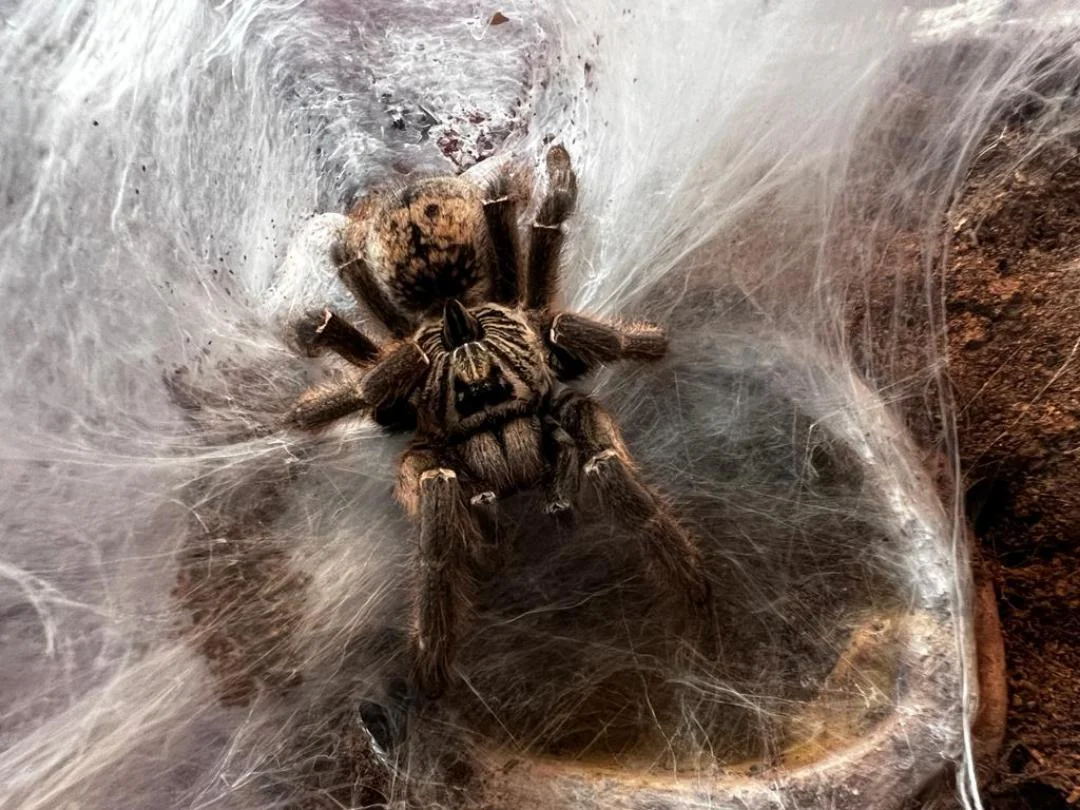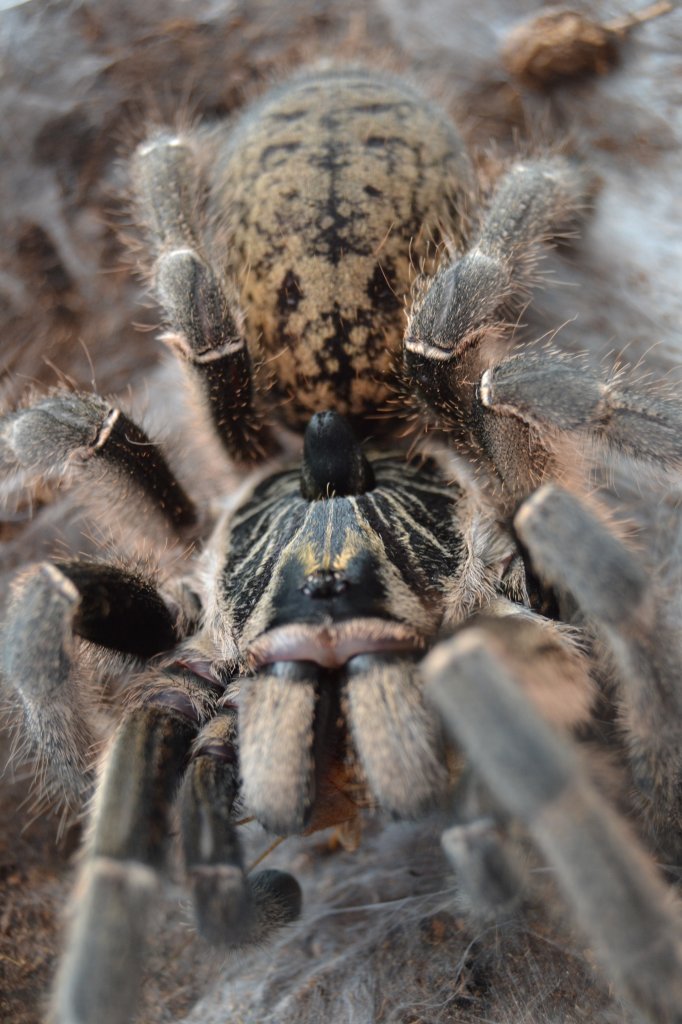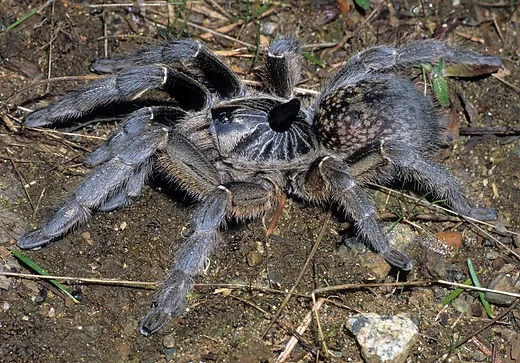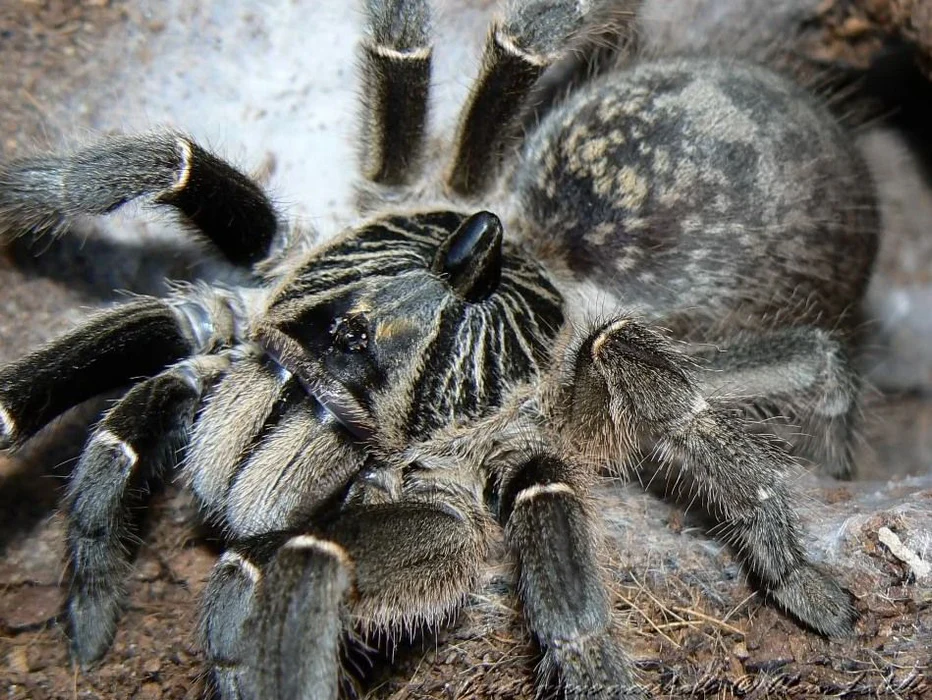The Straight Horned Baboon (Ceratogyrus marshalli) is a fascinating species of tarantula known for its distinctive horn and unique behaviors. Understanding their habitat and care is crucial for enthusiasts and conservationists alike, as it ensures their well-being both in the wild and in captivity.

Natural Habitat of the Straight Horned Baboon
Geographic Distribution
Ceratogyrus marshalli is native to Zimbabwe and Mozambique, primarily found in the Harare region. This area is characterized by a subtropical highland climate, with the species thriving at elevations of approximately 1500 meters.
Typical Environments
In the wild, Straight Horned Baboons inhabit savannas and grasslands, where they construct burrows that provide shelter and protection from predators. These environments are crucial for their survival, offering both food sources and suitable conditions for burrowing.
Climate and Weather Conditions
The climate in their native regions typically features average temperatures around 19°C, with seasonal variations that can influence their behavior and habitat needs. Rainfall averages about 805 mm per year, with distinct wet and dry seasons that affect the availability of resources.

Habitat Needs in Captivity
Enclosure Design
For successful captive care, the enclosure for a Straight Horned Baboon should be spacious, allowing for burrowing and exploration. A recommended size is at least 5 to 10 gallons, with a depth of substrate that enables the spider to dig. Enrichment features such as climbing structures and hiding spots are essential to mimic their natural environment.
Climate Control
Maintaining appropriate temperature and humidity levels is vital. The ideal temperature range is between 20°C to 30°C, with humidity levels kept moderate to prevent desiccation.
Substrate and Flooring
Suitable substrate materials include coconut fiber or peat moss, which allow for burrowing while retaining some moisture. Regular maintenance involves checking the substrate for dryness and ensuring proper ventilation.
Diet and nutrition of Ceretogyrus Marshalli
Natural Diet in the Wild
In their natural habitat, Straight Horned Baboons primarily feed on insects and small invertebrates, supplemented by fruits and other organic matter they may encounter.
Captive Diet Recommendations
In captivity, a balanced diet is crucial. This includes a variety of live prey such as crickets, roaches, and mealworms. Supplementation with vitamins may be necessary, particularly for younger specimens or during breeding seasons.

Social Structure and Behavior
Social Dynamics
Ceratogyrus marshalli exhibits solitary behavior, typical of many tarantula species. They are territorial and prefer to establish their own burrows, although they may tolerate the presence of others under specific conditions.
Enrichment Activities
To promote mental stimulation, interactive toys and puzzles can be introduced into their habitat. Socialization techniques, while limited due to their solitary nature, can involve careful handling and observation.
Health and Veterinary Care
Common Health Issues
Potential health issues for Straight Horned Baboons include molting problems, infections, and stress-related conditions. Regular monitoring is essential to identify any signs of distress or illness.
Routine Veterinary Care
Routine veterinary check-ups are recommended, including vaccinations and preventative health measures. Maintaining a clean environment and proper diet contributes significantly to their overall health.

Breeding and Reproduction
Breeding Behavior
Mating rituals for Ceratogyrus marshalli involve elaborate courtship displays, with males often engaging in specific behaviors to attract females.
Care of Offspring
After mating, females lay eggs in silk sacs, which they guard until the spiderlings emerge. Proper care during this stage includes ensuring a safe environment for the young as they transition into independent life.

Conservation Status and Legal Considerations
Conservation Status
Ceratogyrus marshalli faces threats from habitat loss and the pet trade. Conservation efforts are underway to protect their natural habitats and ensure sustainable populations.
Legal Requirements
Keeping Straight Horned Baboons as pets often requires specific permits and adherence to local regulations. Ethical considerations must also be taken into account, emphasizing responsible ownership and conservation efforts.
Conclusion
In summary, understanding the habitat and care needs of the Straight Horned Baboon is essential for both enthusiasts and conservationists. Proper habitat design, diet, and health care are crucial for their well-being. Responsible ownership and active conservation efforts can help ensure the survival of this unique species for future generations.
